COBE History in Pictures
The 1974 Proposals
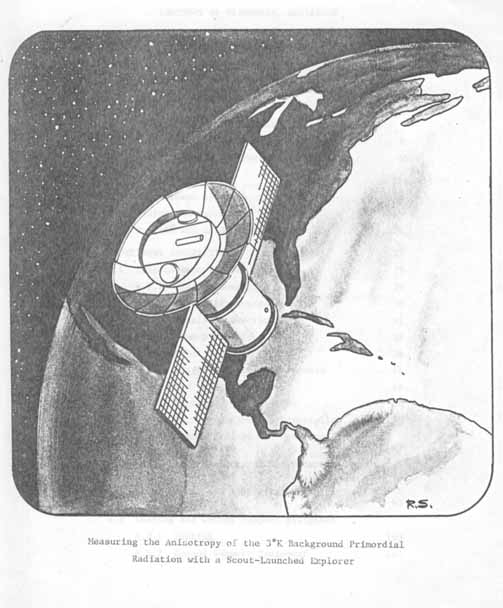
The Lawrence Berkeley Laboratory concept, with principal investigator
Luis Alvarez. It had a single differential microwave radiometer,
operating at 31 GHz. This frequency still has too much galactic
foreground so this proposed instrument would not have succeeded.
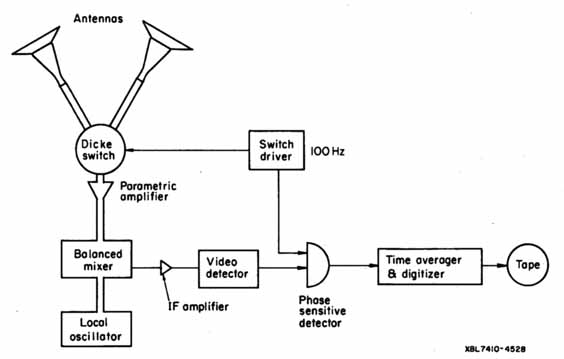
A block diagram of the LBL concept. The 60o angle between the
horns, the 100 Hz chopping rate, and the use of paramagnetic ferrite switches
for the Dicke switch are all parts of the concept that survived into the
final DMR instrument. But the parametric amplifier at the RF frequency
did not get included into the COBE DMR. However the COBE DMR included
3 frequencies: 31, 53 and 90 GHz.
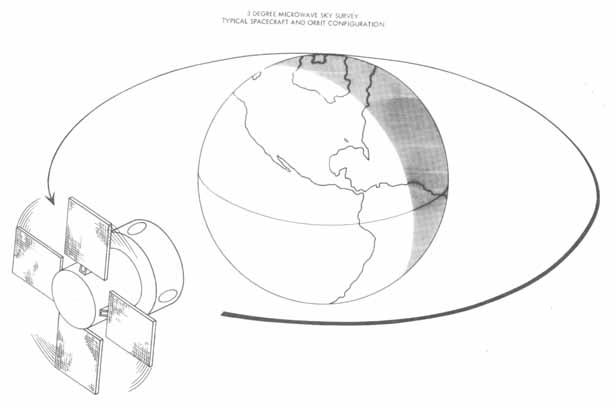
The JPL proposal was for a spin-stabilized spacecraft with microwave
radiometers at three frequencies, 18.5, 31.4, and 54.9 GHz.
These frequencies are high enough and cover a large enough range
to allow the galactic foreground to be measured and removed.
But the spin stabilized spacecraft meant that the scan strategy was
just a circle 90o from the Earth-Sun line. This would cover
the whole sky in six months but does not offer good protection against
systematic errors. The version shown here would have looked at the
Earth for half the time, losing a lot of integration time, and
inducing thermal gradients that would persist into the supposedly good
observing times.
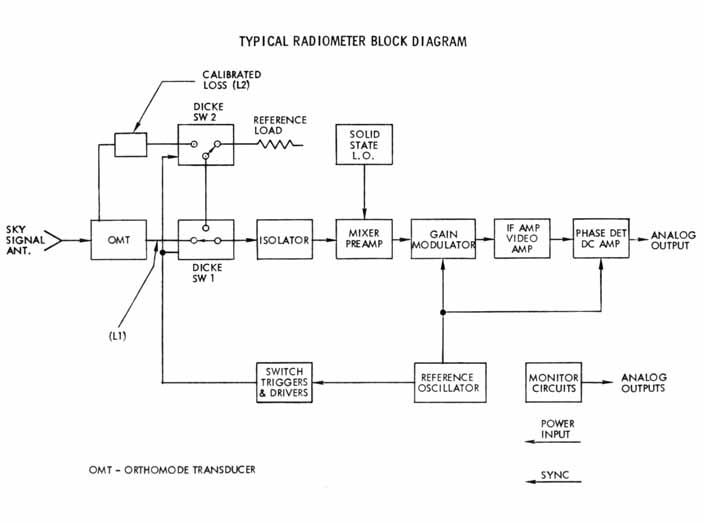
The radiometer design for the JPL proposal was not fixed but the
design shown in this schematic would probably have had systematic errors that
were too large, given the simple scan strategy.
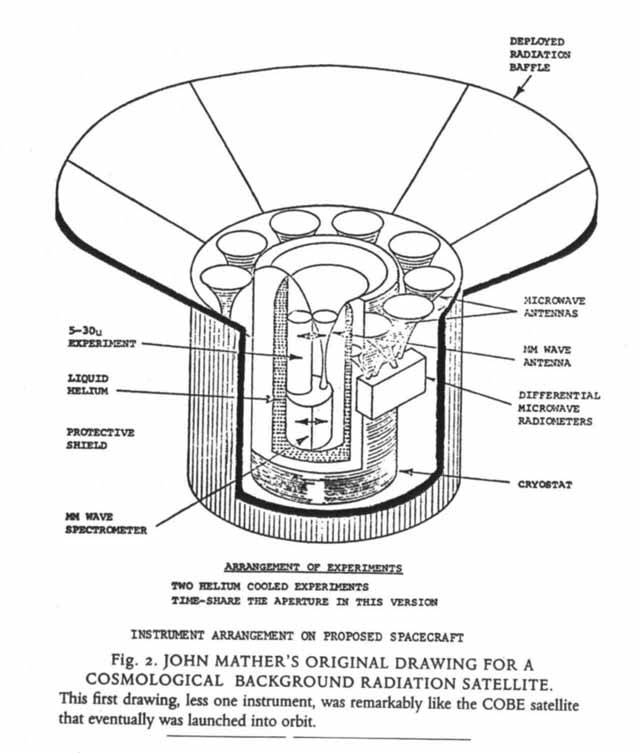
This is from the 1974 proposal for COBE from the Goddard group.
It can be found in
"The Very First Light", by John Mather and John Boslough, 1996.
BasicBooks.
It had the three COBE instruments that actually flew plus a fourth
instrument to measure the spectrum of the IR background.
It proposed a multi-frequency microwave anisotropy experiment with Dicke
switched two horn radiometers, just like the actual DMR on COBE.
Artists' Conceptions of COBE in Space
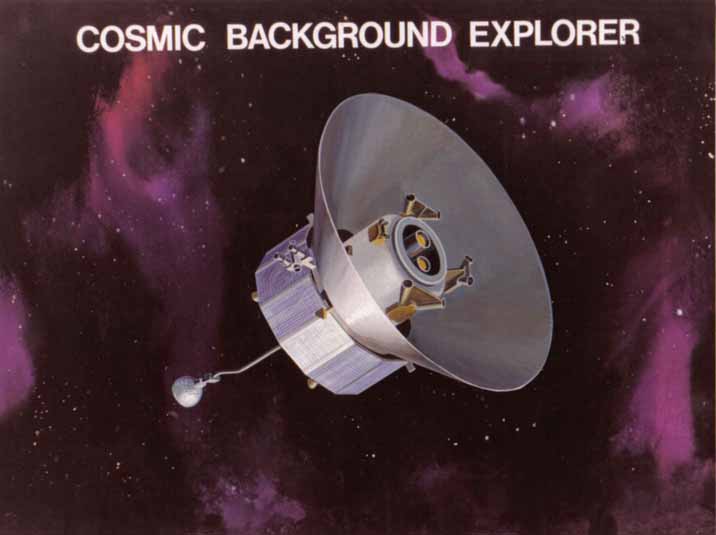
The artist's conception of COBE in space is based on the Blue Book version,
the same as the drawing below.

The COBE drawing in the "Blue Book", the output of the Phase A study in 1977.
This is a Delta version of COBE.
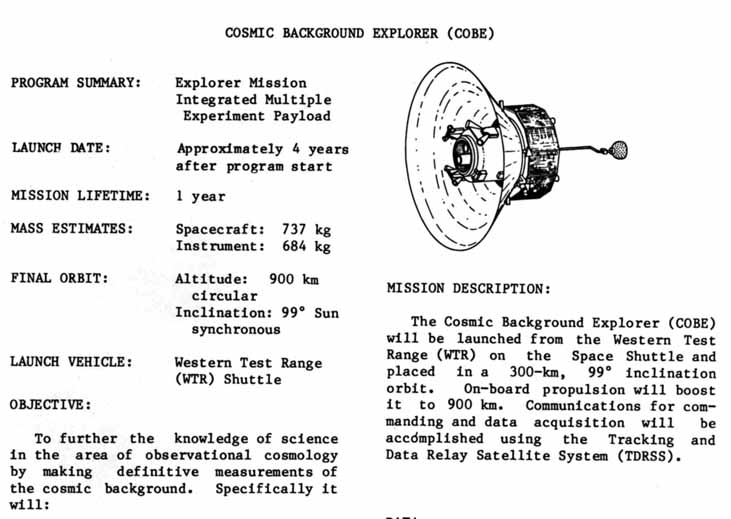
This is the COBE concept in the October 1980 pamphlet in the
collection of mission descriptions. The decision to push COBE onto the
Shuttle had been made, but the art still shows essentially the Blue Book Delta
version. And the mass is only a quarter of what the shuttle version
finally weighed.
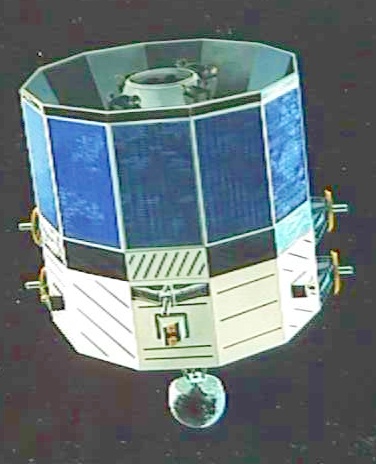
This is the Shuttle version of COBE. It still has the 4 DMRs.
This would be circa 1984 or 1985.
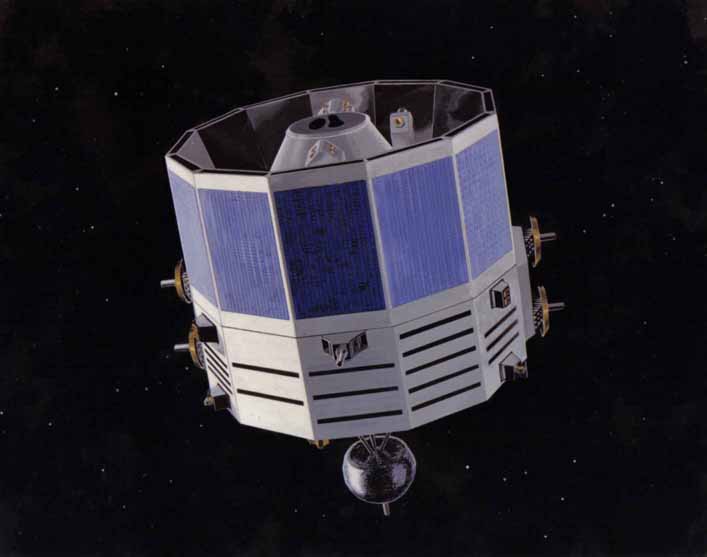
This is the rarely seen 3 DMR Shuttle version of COBE. It shows that the
decision to drop the 22 GHz channel was made before the switch back
to the Delta, at least in the world of vugraph engineering. Note that
the 3 DMRs were not spaced evenly around the circle. A gap was left
where the 22 GHz channel would have been placed. This would be
circa 1985.
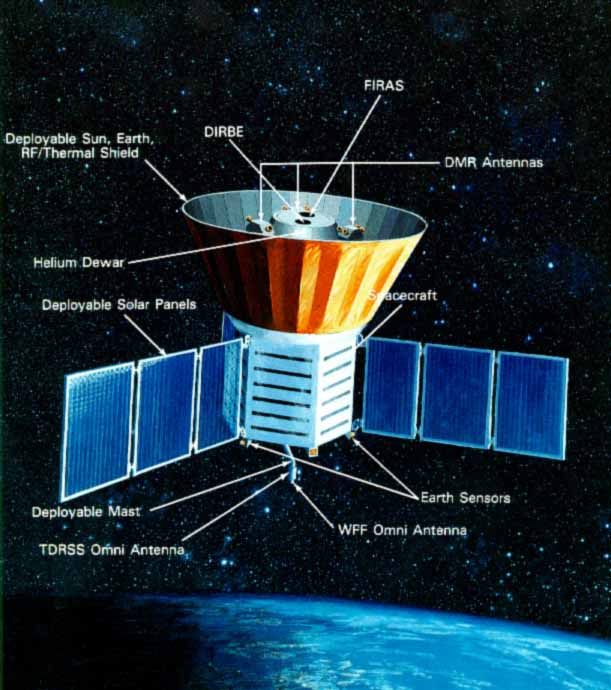
This is the final Delta version of COBE with 3 DMRs spaced evenly around the
outside of the dewar.
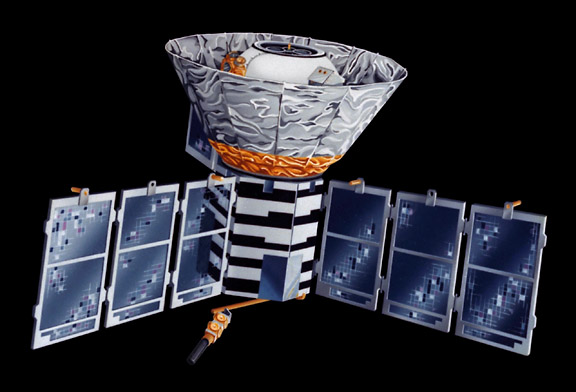
This is the COBE artist's conception from the WMAP web site.
Tutorial:
Part 1 |
Part 2 |
Part 3 |
Part 4
FAQ |
Age |
Distances |
Bibliography |
Relativity
© 2006-2007 Edward L.
Wright. Last modified 03 Jan 2007












